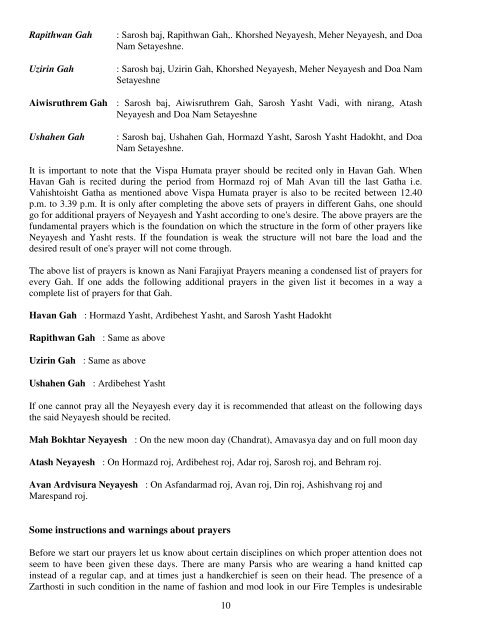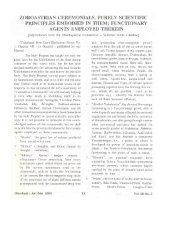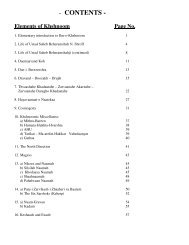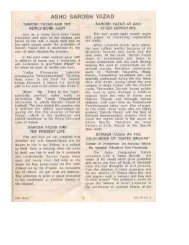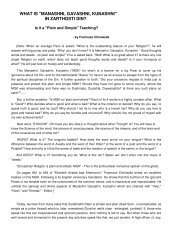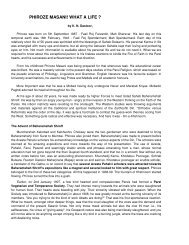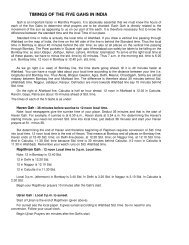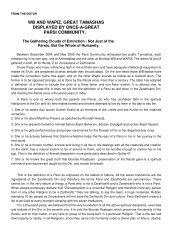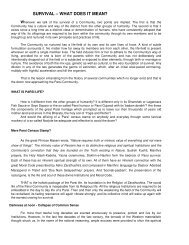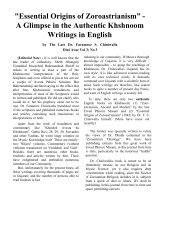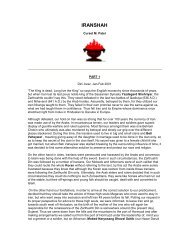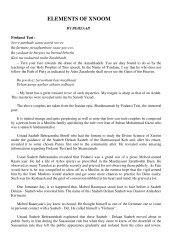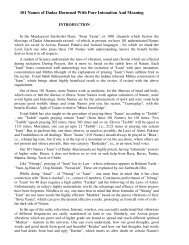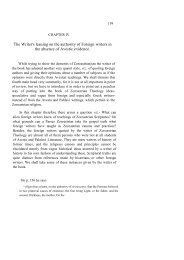a guide to our prayers - Traditional Zoroastrianism: Tenets of the ...
a guide to our prayers - Traditional Zoroastrianism: Tenets of the ...
a guide to our prayers - Traditional Zoroastrianism: Tenets of the ...
You also want an ePaper? Increase the reach of your titles
YUMPU automatically turns print PDFs into web optimized ePapers that Google loves.
Rapithwan Gah : Sarosh baj, Rapithwan Gah,. Khorshed Neyayesh, Meher Neyayesh, and Doa<br />
Nam Setayeshne.<br />
Uzirin Gah : Sarosh baj, Uzirin Gah, Khorshed Neyayesh, Meher Neyayesh and Doa Nam<br />
Setayeshne<br />
Aiwisruthrem Gah : Sarosh baj, Aiwisruthrem Gah, Sarosh Yasht Vadi, with nirang, Atash<br />
Neyayesh and Doa Nam Setayeshne<br />
Ushahen Gah : Sarosh baj, Ushahen Gah, Hormazd Yasht, Sarosh Yasht Hadokht, and Doa<br />
Nam Setayeshne.<br />
It is important <strong>to</strong> note that <strong>the</strong> Vispa Humata prayer should be recited only in Havan Gah. When<br />
Havan Gah is recited during <strong>the</strong> period from Hormazd roj <strong>of</strong> Mah Avan till <strong>the</strong> last Gatha i.e.<br />
Vahish<strong>to</strong>isht Gatha as mentioned above Vispa Humata prayer is also <strong>to</strong> be recited between 12.40<br />
p.m. <strong>to</strong> 3.39 p.m. It is only after completing <strong>the</strong> above sets <strong>of</strong> <strong>prayers</strong> in different Gahs, one should<br />
go for additional <strong>prayers</strong> <strong>of</strong> Neyayesh and Yasht according <strong>to</strong> one's desire. The above <strong>prayers</strong> are <strong>the</strong><br />
fundamental <strong>prayers</strong> which is <strong>the</strong> foundation on which <strong>the</strong> structure in <strong>the</strong> form <strong>of</strong> o<strong>the</strong>r <strong>prayers</strong> like<br />
Neyayesh and Yasht rests. If <strong>the</strong> foundation is weak <strong>the</strong> structure will not bare <strong>the</strong> load and <strong>the</strong><br />
desired result <strong>of</strong> one's prayer will not come through.<br />
The above list <strong>of</strong> <strong>prayers</strong> is known as Nani Farajiyat Prayers meaning a condensed list <strong>of</strong> <strong>prayers</strong> for<br />
every Gah. If one adds <strong>the</strong> following additional <strong>prayers</strong> in <strong>the</strong> given list it becomes in a way a<br />
complete list <strong>of</strong> <strong>prayers</strong> for that Gah.<br />
Havan Gah : Hormazd Yasht, Ardibehest Yasht, and Sarosh Yasht Hadokht<br />
Rapithwan Gah : Same as above<br />
Uzirin Gah : Same as above<br />
Ushahen Gah : Ardibehest Yasht<br />
If one cannot pray all <strong>the</strong> Neyayesh every day it is recommended that atleast on <strong>the</strong> following days<br />
<strong>the</strong> said Neyayesh should be recited.<br />
Mah Bokhtar Neyayesh : On <strong>the</strong> new moon day (Chandrat), Amavasya day and on full moon day<br />
Atash Neyayesh : On Hormazd roj, Ardibehest roj, Adar roj, Sarosh roj, and Behram roj.<br />
Avan Ardvisura Neyayesh : On Asfandarmad roj, Avan roj, Din roj, Ashishvang roj and<br />
Marespand roj.<br />
Some instructions and warnings about <strong>prayers</strong><br />
Before we start <strong>our</strong> <strong>prayers</strong> let us know about certain disciplines on which proper attention does not<br />
seem <strong>to</strong> have been given <strong>the</strong>se days. There are many Parsis who are wearing a hand knitted cap<br />
instead <strong>of</strong> a regular cap, and at times just a handkerchief is seen on <strong>the</strong>ir head. The presence <strong>of</strong> a<br />
Zarthosti in such condition in <strong>the</strong> name <strong>of</strong> fashion and mod look in <strong>our</strong> Fire Temples is undesirable<br />
10


